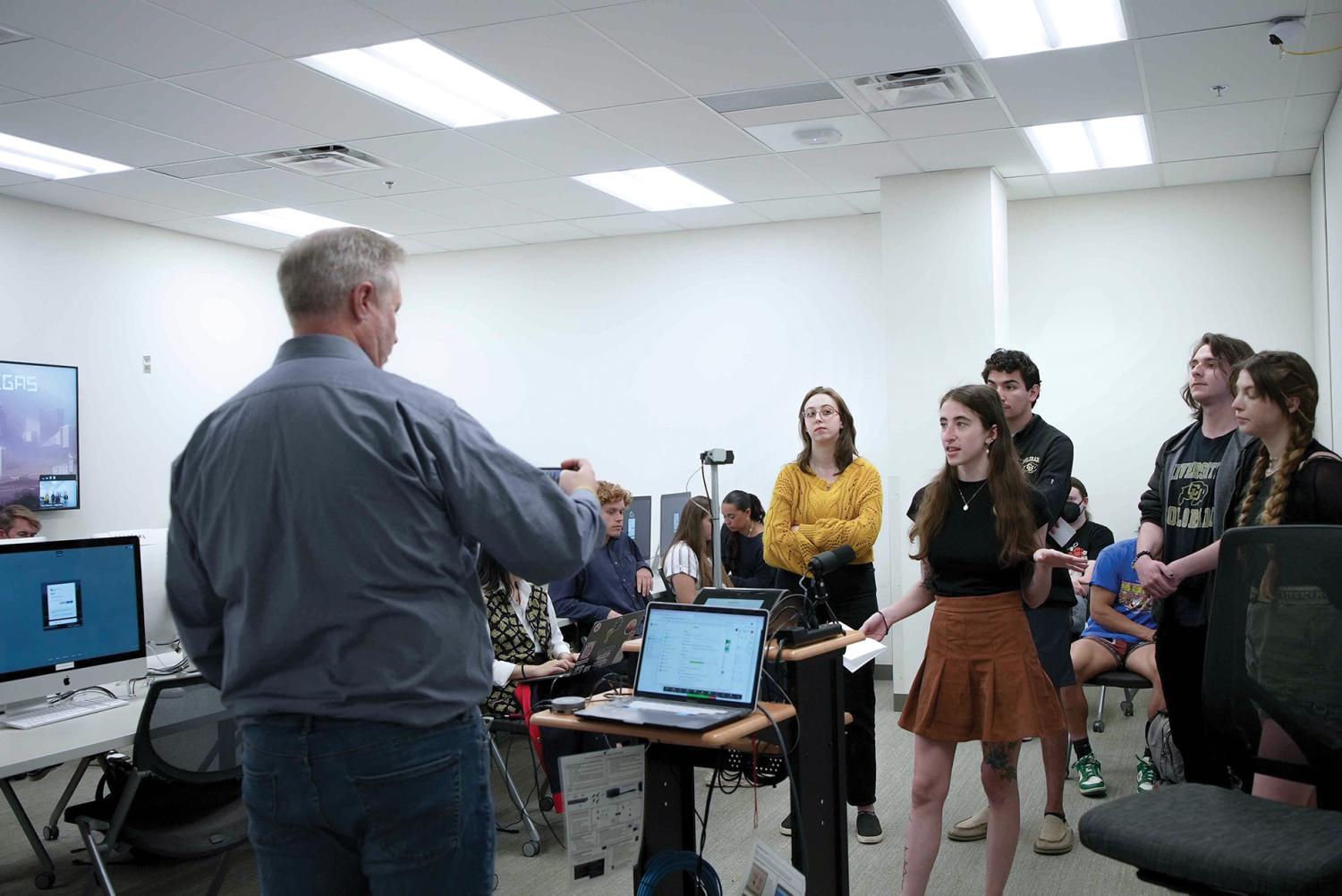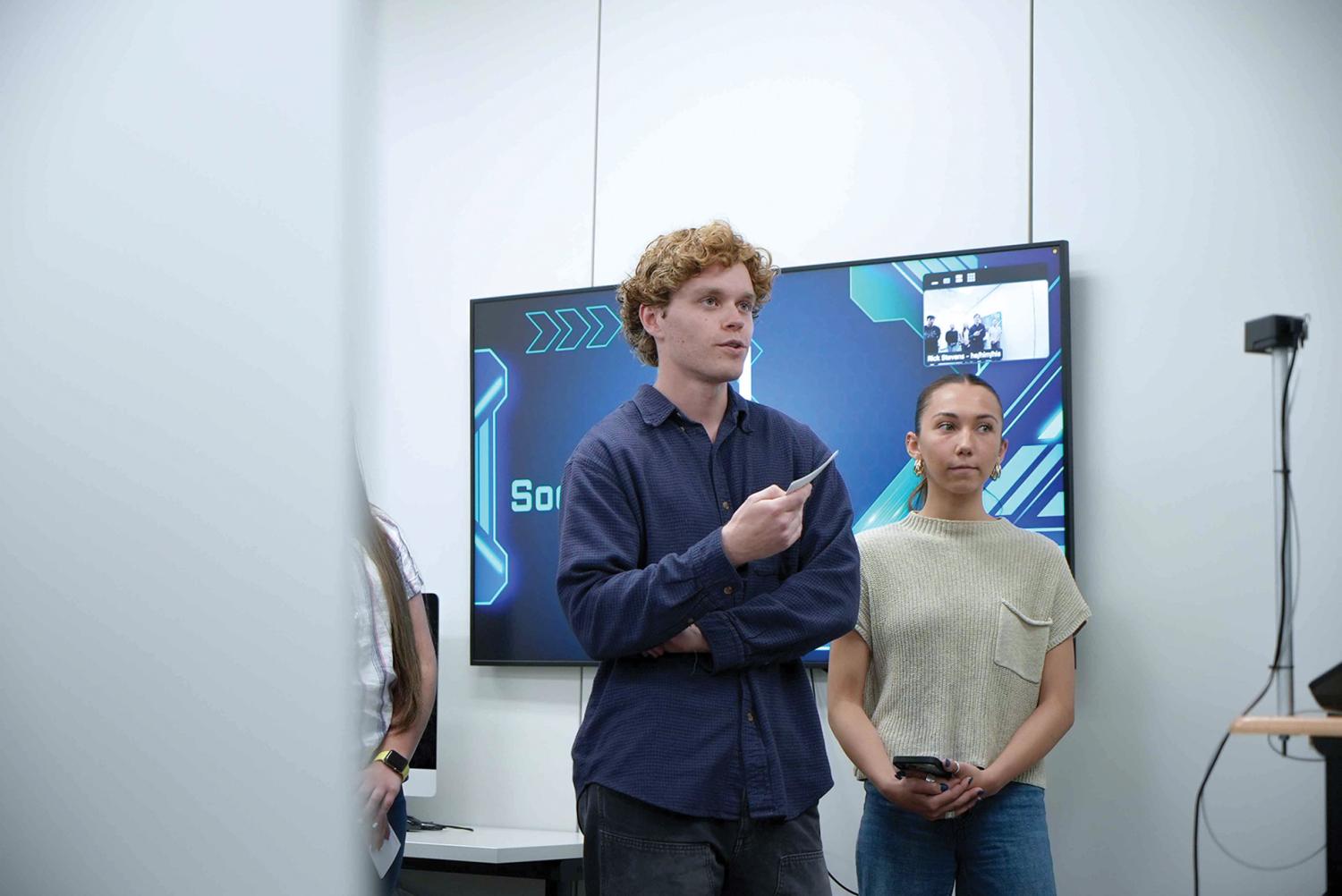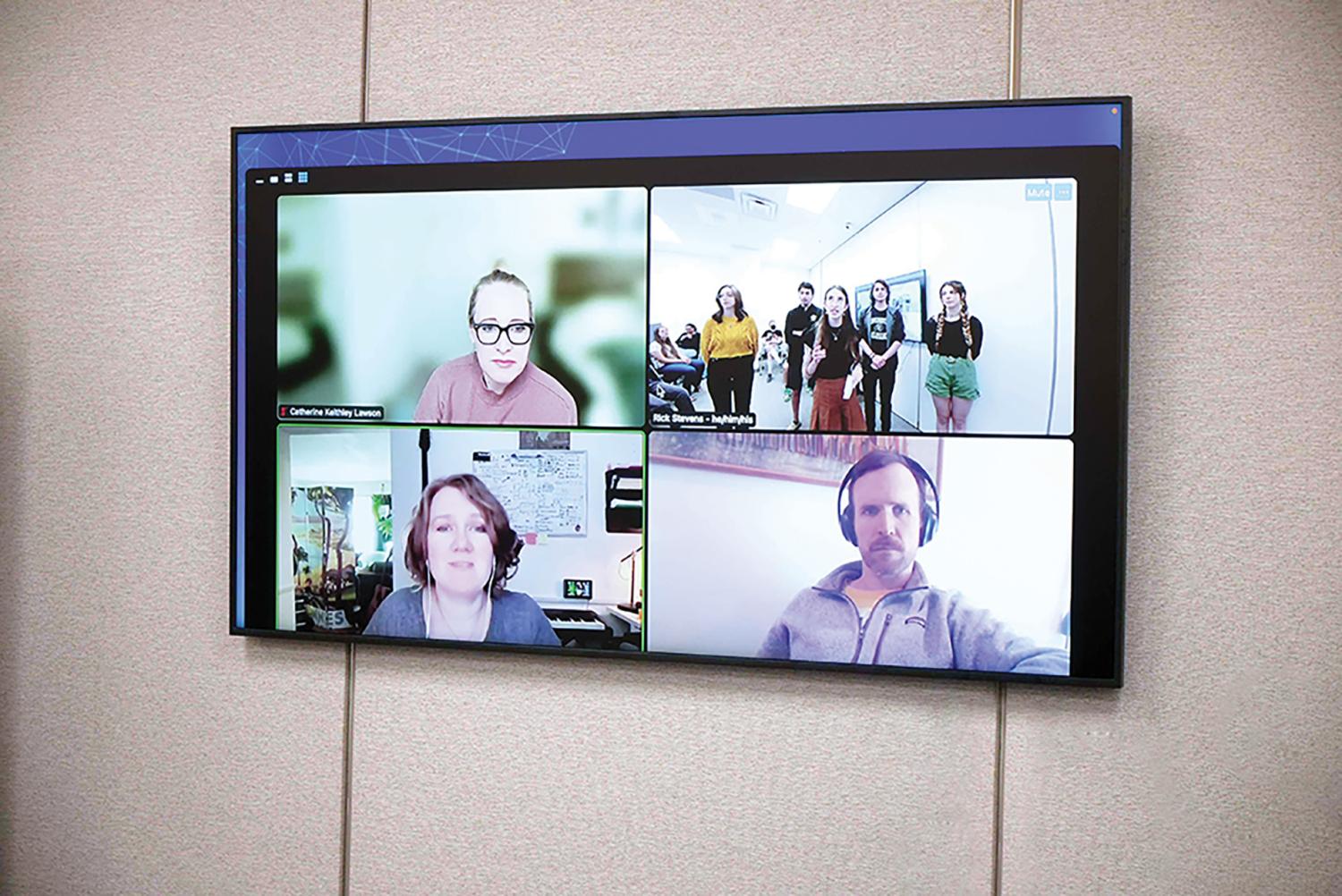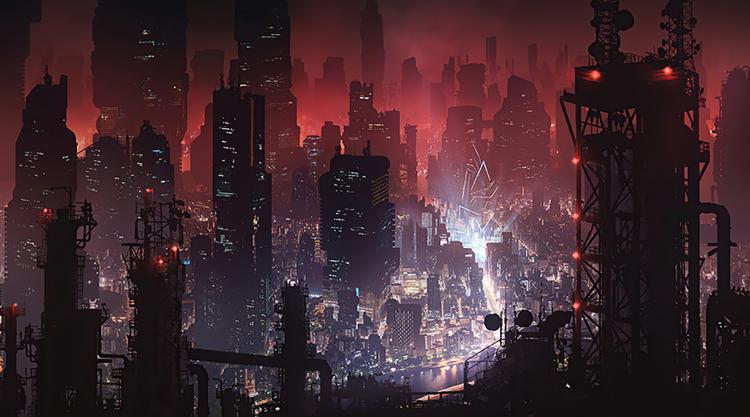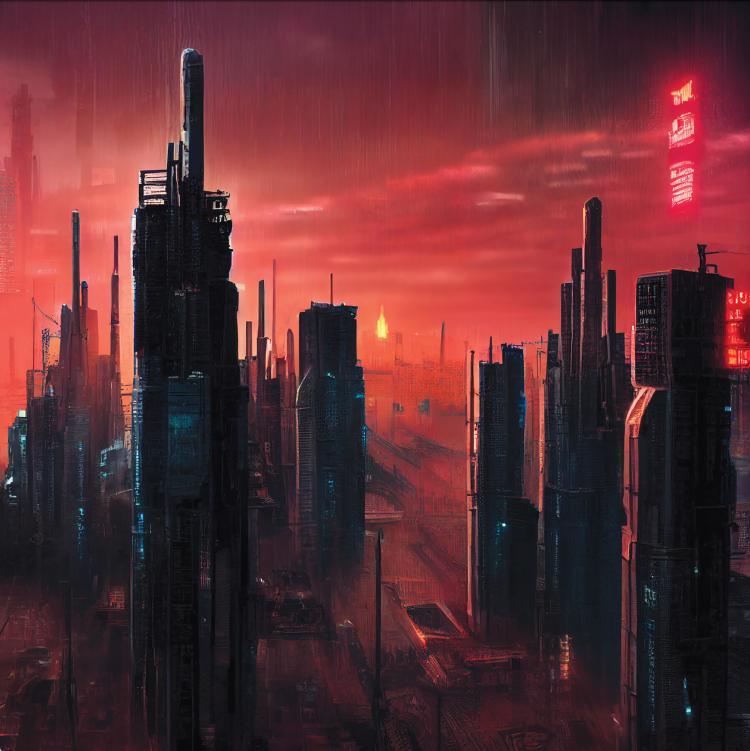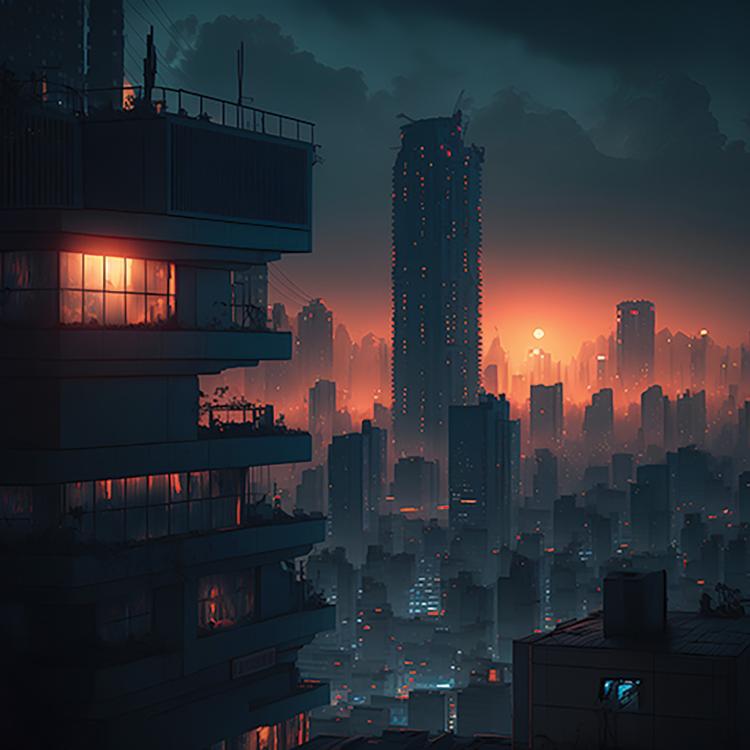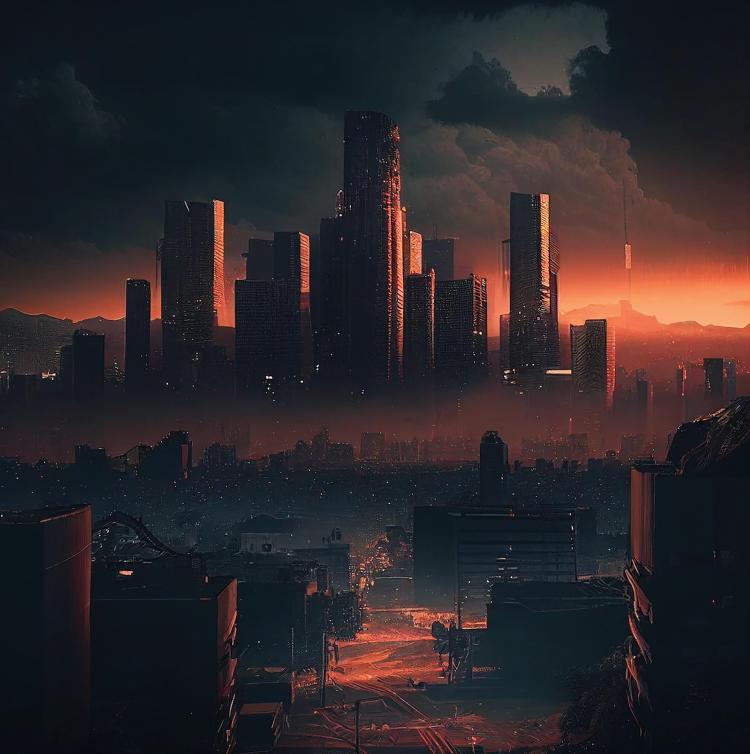By Joe Arney
Photos by Kimberly Coffin (CritMedia, StratComm’18)
There were no green lights, but it was still a trip in the fast lane for media studies students who pitched concepts to three Hollywood insiders as part of Steven T. Seagle and Rick Stevens’ Transmedia World Building course in the spring.
The four teams of students were coached by Seagle (Advert’88) as they pitched concepts—heavy on dystopia, but with some variety, including a musical—directly to writers, producers and showrunners. Seagle is co-founder of the Man of Action Entertainment studio, which created animated franchises like Ben 10 and the characters for Big Hero 6, along with other entries in the Marvel universe.
“The students get critiqued by people who’ve had this experience, and have had their share of successes and failures,” said Stevens, associate dean of undergraduate education and associate professor of media studies. “Failure teaches the best lessons. If you’re on the outside looking in, you never see that.”
“Failure teaches the best lessons. If you’re on the outside looking in, you never see that.
—Rick Stevens
An innovative twist on the course was the use of artificial intelligence to assist with pitches. Students were encouraged to use generative A.I. platforms, such as Dall-E, to create images of landscapes and actors so showrunners could better visualize the concepts.
A media project accepted by a studio includes a creative budget for artists to develop promotional materials that set the tone and mood of a story. But that’s often out of reach for a pitch, which may be refined multiple times as it’s put before different studios or showrunners.
“I’m definitely against using A.I. to generate content that would otherwise be paid work for artists—but in a student pitch process where there is no budget for concept art, it was a great educational application,” Seagle said.
It made an impression with Kelsie Kerr (MediaSt, Film’23), who was part of the team that developed a concept called 2080: Thirst for Power. The team’s pitch drew inspiration from franchises like The Matrix, The Hunger Games and Star Wars.
“When I first signed up for the class, it was super daunting—you’re going to pitch this entire world you’re creating to people in Hollywood,” said Kerr, who’s pursuing a career in media production. “But I think this was the best presentation I’ve ever given—maybe because it was my own material, but the structure of the course really prepared me well for it.”
The chance to pitch to, and learn from, real people in the industry was a huge value add. Kerr connected with one guest whom she followed up with after relocating to Los Angeles during the summer.
“We got to meet guest speakers like Joe Kelly—who was instrumental in reviving the Deadpool character and universe—and it was so cool to meet people who were behind these big names and have them share their insights with us,” she said. “Those interactions gave me the confidence to help me feel like I could be successful in the entertainment industry.”
